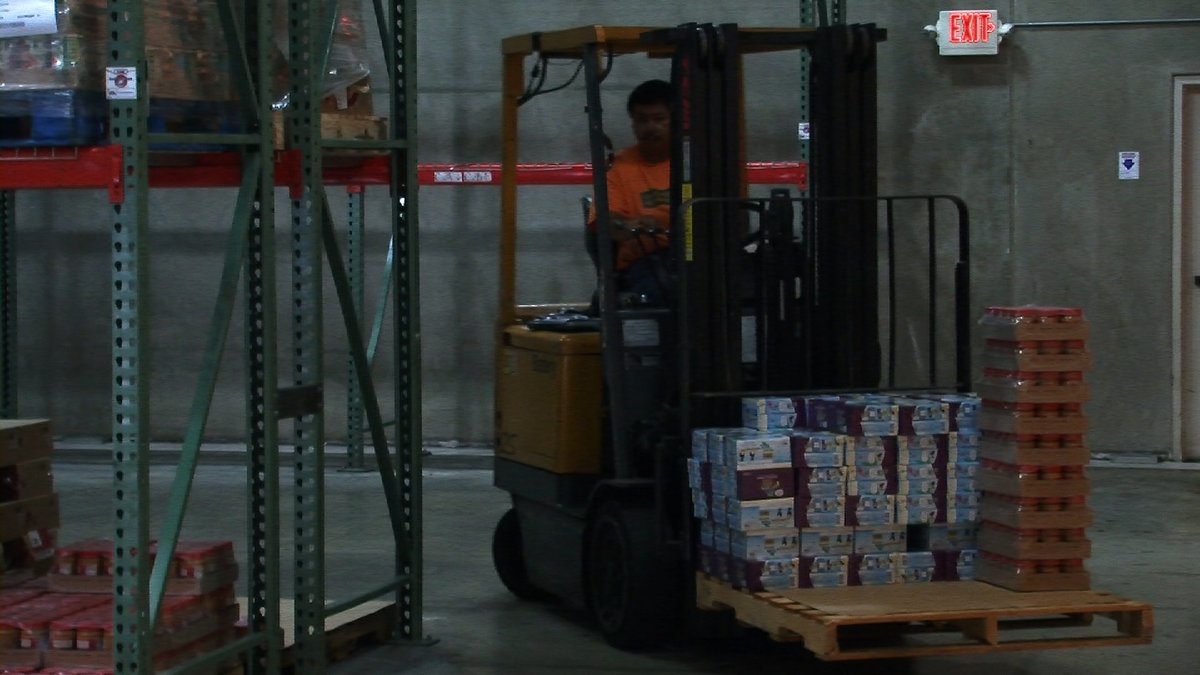
A worker loads food at the Feeding America San Diego distribution center, Sept. 4, 2014. | Photo Credit: Claire Trageser
Almost a half-million people received donations last year from San Diego-area food pantries, according to a report released Thursday by Feeding America San Diego.
The survey found a total of 473,500 people received food donations. On average, 54,400 unique clients were served each week.
The organization also released a study in 2010, but a spokeswoman said its findings couldn’t be compared to this year’s results because they used different methodologies.
Jennifer Gilmore, executive director of Feeding America San Diego, said the study is done to find out who needs food assistance and what food banks are doing to help. The study documents the sources of food available to food assistance agencies across the San Diego region, what types of programs they run and how they use volunteers. It also details information about the clients who come to these agencies.
“We know that the face of hunger is changing,” Gilmore said at a news conference about the report. “We’re serving families, we serve people with jobs and with homes, and we’re serving people who are having to make tough, tough choices every single day between paying utilities and keeping food on the table.”
The study found that 64 percent of households, receiving assistance, included someone who earned wages in the past year. But 58 percent of donation-dependent households have a monthly income of less than $1,000, and 70 percent of the households have incomes below the federal poverty level.
Some of the other findings include:
|
Ellen Gustafson, a local hunger-relief advocate, said the study also helps illustrate how hunger and obesity are interconnected. She said half of San Diegans are overweight or obese.
“We have this dual problem — the dual problem of hunger and obesity — we’re struggling with that here, and these organizations are working every day to figure out how do we address both of these problems at the same time,” Gustafson said.
“We know that we want to buy the healthiest food possible, but sometimes the healthiest food is also the most expensive,” she added.
She said the survey shows that 67 percent of clients, when they do have money, are often buying unhealthy food.
“It’s really important that we have organizations like Feeding America that can respond to that,” she said.
The study reports that 75 percent of the food given out by Feeding America San Diego is nutritious, and half of all distributed food is fresh produce.
